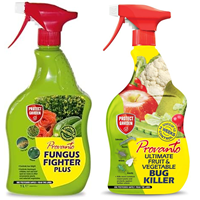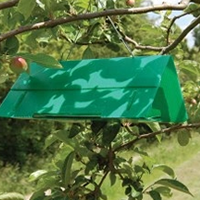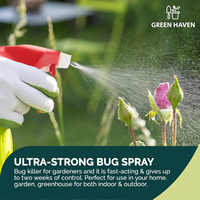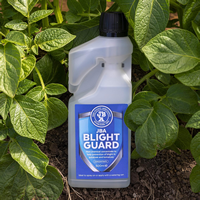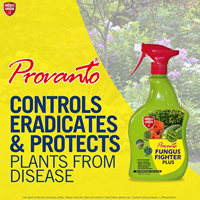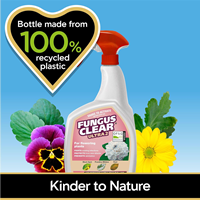Planting, Pruning & Caring for Opuntia Cacti – Prickly Pear Cactus | gardenseeker.co.uk
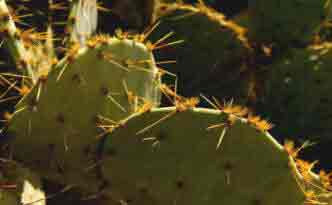
Commonly known as Prickly Pear Cactus - not hard to see why!
It is a large group of Cacti with many different types that are
suitable as houseplants. Prickly Pears are generally easy to keep. We
list some of the things that you will need to do to care for your
Opuntia - Prickly Pear Cactus!
The plants: A favourite with collectors, this group of over 200
cacti ranges in size from small, ground-covering plants to tree-sized
cacti.
Opuntia cylindrical: A cactus with a spined cylindrical stem.
Older plants do form branches, and, if allowed to grow unchecked, may
produce pinky-red dish-shaped flowers in late spring. Flowering does not
usually occur before the Opuntia has reached 2m in height!
Opuntia microdasys: This cactus has large, flat, pale green
pads covered with glochids – sporadic tufts of little hooked barbs. In
Opuntia microdasys albinospina these glochids are white. The pads may
grow up to 30cm across when grown as a houseplant. Occasionally small
yellow flowers are produced, but this is unusual a houseplant setting.
Opuntia phaecantha: A smaller cactus than above, the O.
phaecantha has more elliptical-shaped pads up to 15 cm across. The
glochids are yellow-brown, and small yellow flowers may be produced.
This Opuntia is fairly tolerant of cool conditions.
Opuntia vestita: A smaller cactus with jointed cylindrical stems which are easily broken off in sections. A woolly cactus with occasional red flowers.
Their Needs:The Opuntia spp. Enjoy a well-lit position including direct sun, low
humidity and a winter minimum above 7C
Care: Water sparingly through spring and summer, using a little
specialised cactus feriliser during the summer months. Reduce watering to a
minimum over winter. Most cacti are potted in a cactus compost mix, but
those with flat pads seem to thrive in regular
loam-based potting mix.
Re-pot in spring only if necessary. Break off pads or sections to propagate.
Good for: These tend to be a collectors favourite. The Opuntia
spp. Look good grown in a collection usually in terracotta pots with sand or
gravel around the plants. Minimalist, a challenge to bring into flower. Some
people love them others do not.
All Cacti - that I am aware of - can suffer from mealybugs - often getting in between the spines. Use an insecticide with a small brush to get at them!
A Complete Guide to Planting, Pruning, Growing and Caring for a Opuntia Cacti - Prickly Pear Cactus
Introduction to Opuntia Cacti - Prickly Pear Cactus
Opuntia Cacti - Prickly Pear Cactus is a unique and interesting plant that is sure to add a touch of flair to your home or garden. Native to the Americas, this cactus is known for its wide, flat pads that are covered in small spines. The pads are edible and can be used to make dishes such as tacos and salads. With its low-maintenance care requirements, Opuntia Cacti - Prickly Pear Cactus is a great choice for gardeners of all levels. With proper planting, pruning, and care, you can enjoy the beauty of this cactus for many years to come.
Ideal Environment for Prickly Pears
The ideal environment for growing Opuntia Cacti - Prickly Pear Cactus is one that is warm and sunny. Prickly pears thrive in temperatures between 70 and 85 degrees Fahrenheit and need at least six hours of direct sunlight each day. They need well-draining soil and should be watered regularly, but not too frequently.
During the summer months, the soil should be kept moist but not soggy. During the winter months, water should be limited to once a month.
Prickly pears also prefer a slightly acidic soil with a pH of 6.0 to 7.5. It is important to keep the soil free of weeds and pests, as these can damage the plant and stunt its growth.
Propagation and Planting of Prickly Pear Cactus
Propagating and planting a prickly pear cactus, or Opuntia Cacti, is a relatively easy task that can be done with minimal effort. To propagate the cactus, simply take a cutting from a mature plant and place it in soil. Once the cutting has taken root, it can be transplanted into a larger pot or garden bed. When planting the prickly pear cactus in the garden, it is important to choose an area with well-draining soil and plenty of sun. The cactus should be planted at least two feet apart to allow for proper growth and air circulation. To ensure the cactus is properly anchored in the ground, use a shovel to dig a hole and plant the cactus at the same depth as it was in the pot. Water the cactus thoroughly after planting and be sure to keep the soil slightly moist during the first few weeks as the cactus takes root. With the proper care and attention, your Opuntia Cacti - Prickly Pear Cactus will thrive and bring beauty to your garden for many years to come.
Pruning and Maintaining Your Prickly Pear Cactus
Pruning and maintaining your prickly pear cactus is essential for it to thrive in your home. Pruning should be done when the cactus is young and actively growing, usually in the springtime. Pruning is important to help your cactus grow in a healthy and balanced way. You can prune off any dead or diseased parts of the cactus, as well as any parts that are growing in an undesirable direction. Pruning can also help to encourage new growth and keep the cactus looking neat and attractive.
When pruning your prickly pear cactus, be sure to use sharp, clean scissors or pruning shears. Be careful to avoid any of the sharp spines that the Opuntia cacti - Prickly Pear Cactus is known for. You can also wear protective gloves if necessary. After pruning, make sure to remove any fallen spines from the area to avoid accidental pricks. With regular pruning and maintenance, your prickly pear cactus will remain healthy and beautiful for many years to come.
Dealing with Common Problems When Caring for Opuntia Cacti
When caring for an Opuntia Cacti (Prickly Pear Cactus), there are a few common problems that may arise. One of the most common issues is over-watering. If your Opuntia Cacti is receiving too much water, it can cause the plant to rot and die. To avoid this, make sure to water your Opuntia Cacti only when the soil is completely dry.
Additionally, another common problem is not enough sunlight. Opuntia Cacti need plenty of sun to thrive, so make sure to give your plant at least six hours of direct sunlight each day.
Finally, another issue to watch out for is pests. Pests can be particularly damaging to Opuntia Cacti, so be sure to inspect your plant regularly for any signs of infestation. By following these simple steps, you can ensure that your Opuntia Cacti stays healthy and happy.
Common Pests and Diseases of Opuntia Cacti (Prickly Pear Cactus)
Opuntia cacti, commonly known as Prickly Pear, are hardy plants. However, they can still be affected by various pests and diseases. Here's an overview of the most common issues and how to treat them:
-
1. Mealybugs:
- Cause: These pests are attracted to cacti and can infest various parts of the plant.
- Symptoms: They appear as tiny, fluffy white spots on the plant. If left untreated, they can cause yellowing and wilting.
- Treatment: Remove visible bugs with a cotton swab dipped in rubbing alcohol. For severe infestations, use a suitable insecticide.
- Prevention: Regularly inspect your cacti for early signs of infestation.
-
2. Red Spider Mites:
- Cause: These mites are common in dry conditions.
- Symptoms: They cause fine webbing and speckling or yellowing of the leaves.
- Treatment: Use a miticide or insecticidal soap.
- Prevention: Maintain good air circulation and avoid overwatering.
3. Anthracnose (fungus - Colletotrichum spp.):
- Cause: This fungus thrives in warm, wet conditions.
- Symptoms: It causes dark, sunken spots on stems and fruits.
- Treatment: Remove and destroy infected parts. Apply a suitable fungicide if necessary.
- Prevention: Avoid overhead watering and ensure good air circulation.
-
4. Scorch or Sunscald (fungus - Hendersonia opuntiae):
- Cause: This disease is common in high light and temperature conditions.
- Symptoms: Causes distinct spots that may look like burns.
- Treatment: Reduce light intensity and apply a suitable fungicide.
- Prevention: Provide shade during the hottest part of the day.
-
5. Phyllosticta Pad Spot (fungus - Phyllosticta spp.):
- Cause: This fungus affects cacti in the Opuntia family.
- Symptoms: Causes dark spots on the pads of the cacti.
- Treatment: Remove and destroy infected parts. Apply a suitable fungicide if necessary.
- Prevention: Avoid overhead watering and ensure good air circulation.
-
6. Root Rot (fungus - Fusarium spp., Phytophthora spp.):
- Cause: Overwatering and poor drainage.
- Symptoms: The plant becomes soft and discolored at the base, and may eventually collapse.
- Treatment: Cut away the rotten parts and repot the healthy parts in fresh, well-draining soil.
- Prevention: Avoid overwatering and ensure the pot has adequate drainage.
Maintaining Plant Health:
- Watering: Opuntia cacti are drought-tolerant. Water thoroughly but allow the soil to dry out completely between waterings.
- Light: They prefer full sun but will tolerate some shade.
- Soil: Use a well-draining cactus mix to prevent waterlogging.
- Temperature: These cacti are hardy and can tolerate a range of temperatures, but they do best in warm conditions.
Regular inspection and prompt treatment of any issues will help keep your Opuntia cacti healthy and thriving.
Additional Advice and Tips for Caring for Prickly Pear Cactus
When caring for a Opuntia Cacti - Prickly Pear Cactus, there are some additional tips and advice that can help ensure your plant thrives. It's important to remember that these are hardy plants that are accustomed to a dry climate, so they don't need much water. When you do water, it's best to do so in the morning and try to avoid getting the leaves wet. The leaves are prone to rot if they stay wet for too long.
When pruning your Prickly Pear Cactus, it's important to use a sharp, clean pair of scissors. This helps to ensure that you don't damage the plant by tearing the skin and causing it to become vulnerable to infection. Prune away any dead or dying parts of the cactus and be sure to wear gloves as the spines can be sharp.
In conclusion, the prickly pear cactus (Opuntia Cacti) is a great addition to any garden or home. It is a hardy plant that is easy to propagate, plant, prune and maintain. With the right environment, it can thrive and produce beautiful flowers and fruits. However, like any plant, it can be prone to pests and diseases. To ensure a healthy and happy prickly pear cactus, it is important to be aware of common problems and take steps to prevent them. With a little knowledge and care, you can enjoy a beautiful and long-lasting prickly pear cactus. So why not give it a try? Start your prickly pear cactus journey today and reap the rewards of your efforts.
Frequently Asked Questions
Q1: What is an Opuntia Cacti - Prickly Pear Cactus? A1: Opuntia Cacti – Prickly Pear Cactus is a type of cactus native to the Americas. It is known for its wide variety of shapes and sizes, from small, round pads to long, flat pads. It is also known for its bright yellow flowers and its edible fruits, or “prickly pears”.
Q2: What is the ideal environment for a Prickly Pear Cactus? A2: Prickly Pear Cacti prefer warm, sunny, and dry climates. They need plenty of direct sunlight and should be planted in well-draining soil. They should also be protected from strong winds and cold temperatures.
Q3: How do I propagate and plant a Prickly Pear Cactus? A3: Prickly Pear Cactus can be propagated through cuttings or seeds. To plant a cutting, it should be allowed to dry out for a few days before planting it in well-draining soil. To plant seeds, they should be planted in a shallow container and kept in a warm, sunny location.
Q4: How do I prune and maintain my Prickly Pear Cactus? A4: Pruning your Prickly Pear Cactus should be done carefully, as the spines can be sharp and painful. Pruning should be done with sharp, clean shears, and any dead or diseased parts of the plant should be removed. Regular maintenance should include watering, fertilizing, and checking for pests.
Q5: What are some common problems when caring for an Opuntia Cacti - Prickly Pear Cactus? A5: Common problems when caring for an Opuntia Cacti – Prickly Pear Cactus include over-watering, under-watering, sunburn, and pest infestations. These can be avoided by providing the correct amount of water and sunlight, and regularly checking for pests.
Q6: What additional advice and tips should I follow when caring for a Prickly Pear Cactus? A6: Additional advice and tips for caring for a Prickly Pear Cactus include providing adequate drainage, avoiding overwatering, and avoiding strong winds and cold temperatures. It is also important to regularly check for pests and prune away any dead or damaged parts. Finally, wear gloves when handling the plant to protect yourself from the spines
Best Selling Gardening Products
Popular Gardening Sections

Problems
Identify Weeds in The Garden - How to deal with weeds. Diseases and Pest which harm your garden and plants, learn how to prevent, deter and erradicate your garden problems.
Garden Problems
Pruning
Pruning Guide. Shrubs flower better with correct pruning. Many illustrations and examples of what to do - and when. Includes evergreens, roses, flowering shrubs, spring flowering shrubs and pruning for stem effect. This is our most viewed and comprehensive section,
Pruning
Gardening Businesses
Gardening Businesses listed in the UK counties and USA states. County and State Listings of businesses involved in Garden supplies and services. If you wish to be added to the Directory, please send us your information. Having problems, use the search box
Businesses
Gardening
In this section you will learn about Gardening Basics, Containers, Landscaping, Propagation and Soil.
Gardening
Gardening Gifts
Gardening Gifts and Reviews, Read Before you Buy
- Gardening Gifts Ideas
- Gifts For Her
- Gifts For Men
- Power Tool Gifts
- Cheap Gifts
- Personalised Gifts
- Wildlife Gifts
- Family Gifts
